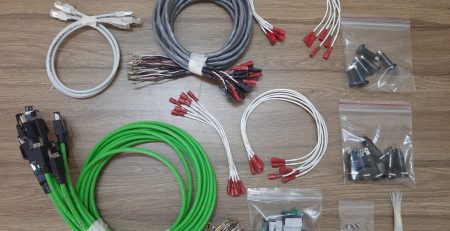What are the different types of cables?
There is an understanding that Cable and Wires are same. However, there is a small difference.
Though both of them are used for carrying electrical current, a cable is a group or bundle of multiple wires inside a common sheathing where as a wire is made of a single electrical conductor.
Here are the many types of cables.
- Coaxial cable – This is mainly used for radio frequency signals, for example in cable television distribution systems. Coaxial cable is a type of copper cable particularly built with a metal shield and other machinery, engineered to block signal interfering. It is mainly used by cable TV industries to connect their satellite antenna services to customers’ private as well as commercial purposes.
- Communications cable – Communications cable is primarily a cable used for data communication by using various frequency currents. Communication cable is not the same as power cables. Actual power cables are designed for high voltages and high currents; while communication cables are intended for low voltage and low currents.
- Direct-buried cable – Direct-buried cable (DBC) is a type of communications or broadcasting electrical cable which is specially built to be hidden under the ground without any extra covering, sheathing, or piping for its protection. The most direct-buried cable is designed to explicit acceptances to heat, moisture, conductivity, and soil acidity. DBC consists of several layers of heavy metallic-banded sheathing, reinforced by heavy rubber covers, shock-absorbing gel, wrapped the thread-fortified waterproof tape, and stiffened by heavy metalcore.
- Flexible cables – These are also a type of electrical cables, which are specially designed to cope with tight bending radii and physical tension associated with moving applications, like inside cable carriers. Demand in the field of automation technology necessitated flexible cable development. They are also called “chain-suitable”, “high-flex” or “continuous flex”. A high level of flexibility increases its life span. The dynamic cable is capable of completing, one to three billion cycles.
Find the list of many other types of cables
- Heliax cable
- Non-metallic sheathed cable (or nonmetallic building wire, NM, NM-B)
- Metallic sheathed cable (or armored cable, AC, or BX)
- Multicore cable (consist of more than one wire and is covered by cable jacket)
- Paired cable – Composed of two individually insulated conductors that are usually used in DC or low-frequency AC applications
- Portable cord – Flexible cable for AC power in portable applications
- Ribbon cable – Useful when many wires are required. This type of cable can easily flex, and It is designed to handle low-level voltages.
- Shielded cable – Used for sensitive electronic circuits or to provide protection in high-voltage applications.
- Single cable (from time to time this name is used for wire)
- Submersible cable
- Twinax cable
- Twin-lead – This type of cable is a flat two-wire line. It is commonly called a 300 Ω line because the line has an impedance of 300 Ω. It is often used as a transmission line between an antenna and a receiver (e.g., TV and radio). These cables are stranded to lower skin effects.
- Twisted pair – Consists of two interwound insulated wires. It resembles a paired cable, except that the paired wires are twisted



Leave a Reply